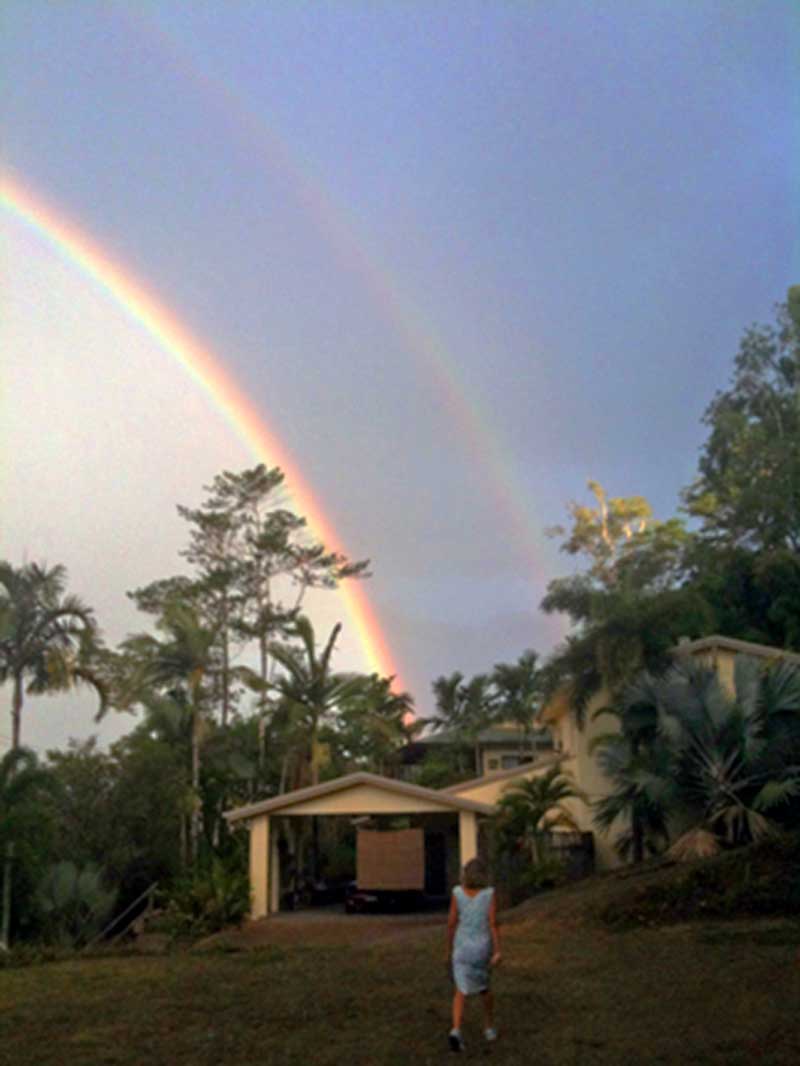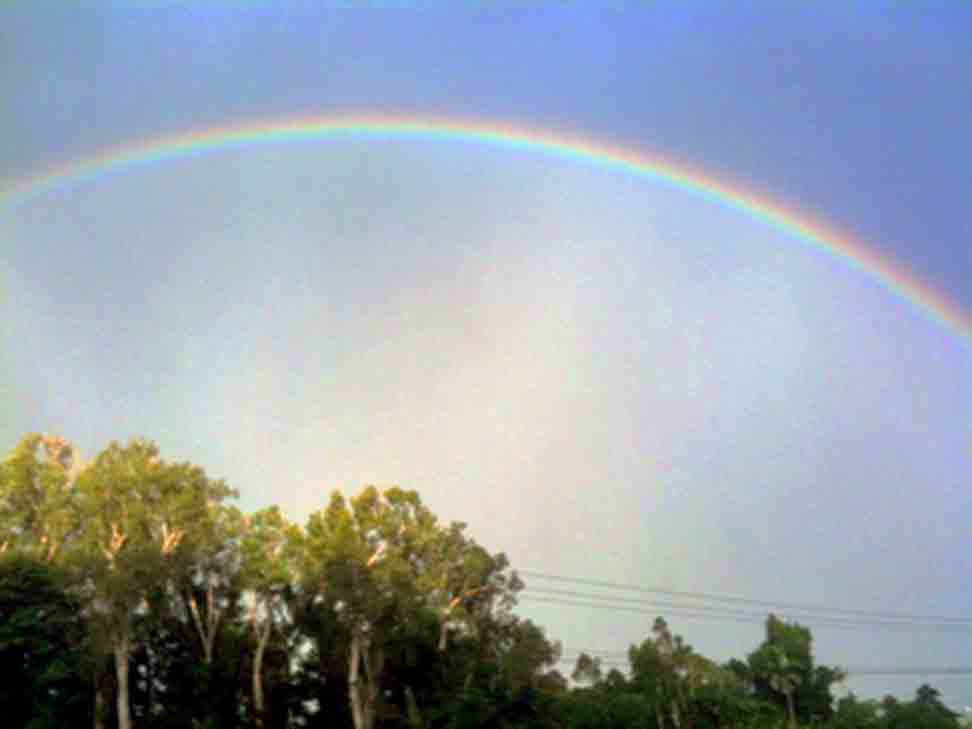In contrast
What Carter had actually seen was a bright double rainbow. And one of the most notable characteristics of such a sight is that the sky between the primary and secondary arcs appears darker than regions surrounding it. Alexander of Aphrodisias first described this curiosity in a.d. 200 in his commentary on the fourth volume of Aristotle’s Meteorology. Today, skywatchers continue to rediscover it whenever two rainbows appear at once.
Rainbows are concentric arcs of multicolored light that appear in rain-washed skies and are centered directly opposite the Sun at a place known as the “antisolar point.” The brightest displays associated with Alexander’s Dark Band have primary bows 42° from the antisolar point and secondary bows that stretch 51° away from it. The highest bows occur at sunrise and sunset. The primary always has blue/violet light on the inside and red light on the outside, while the opposite is true for the secondary bow.
Aside from the phenomenon Carter described, one of her images also caught my attention because it captured an uncommon occurrence — a “rainbow wheel” or “spoked bow” — one that I have yet to see myself. Let’s look closely at this rare sight.
In her close-up shot of the primary bow, Carter recorded dark and light radial streaks like the spokes of a wheel descending from the primary toward the rainbow center.
“The darker spokes are produced by small clouds outside the rainbow and nearer the Sun that cast long shadows across the sky,” explains Les Cowley, a retired physicist and an expert in atmospheric optics (www.atoptics.co.uk). “Their shadows are normally invisible, but when they block sunlight from reaching rainbow-forming raindrops, we see them as dark spokes. The spokes can be even more dramatic when seen in real life or on video, for they sometimes rotate around the rainbow, turning it into a wheel.”
Paying attention to the sky, even in the daytime, can yield views of rare events like wheels spinning in the sky. While we are all familiar with regular, single rainbows, different weather and atmospheric conditions make the variants of this phenomenon fascinating to observe.
As always, let me know what you see and think at someara@interpac.net.












